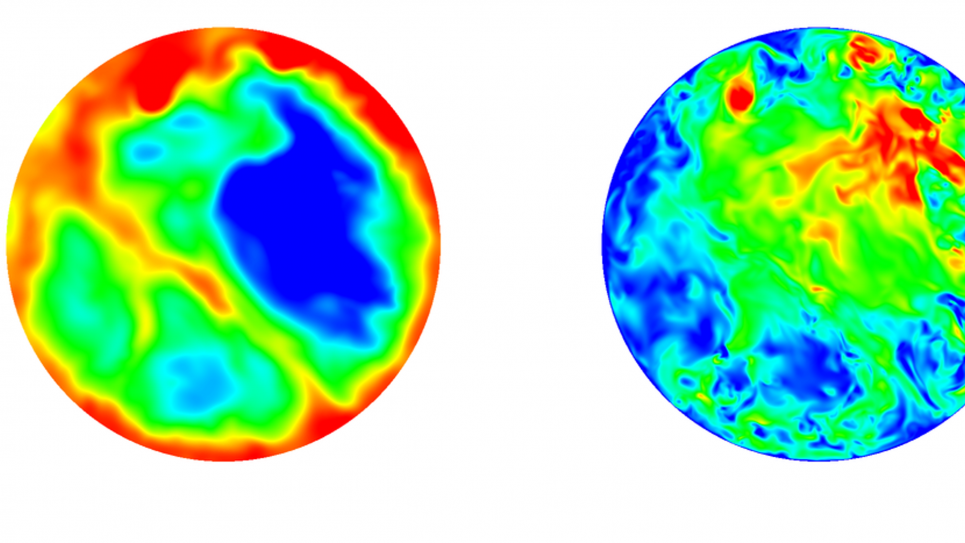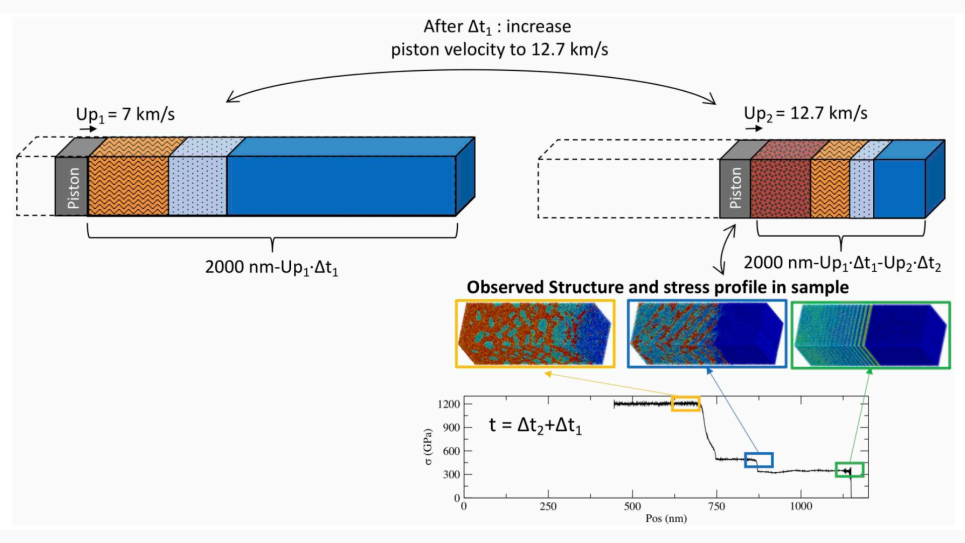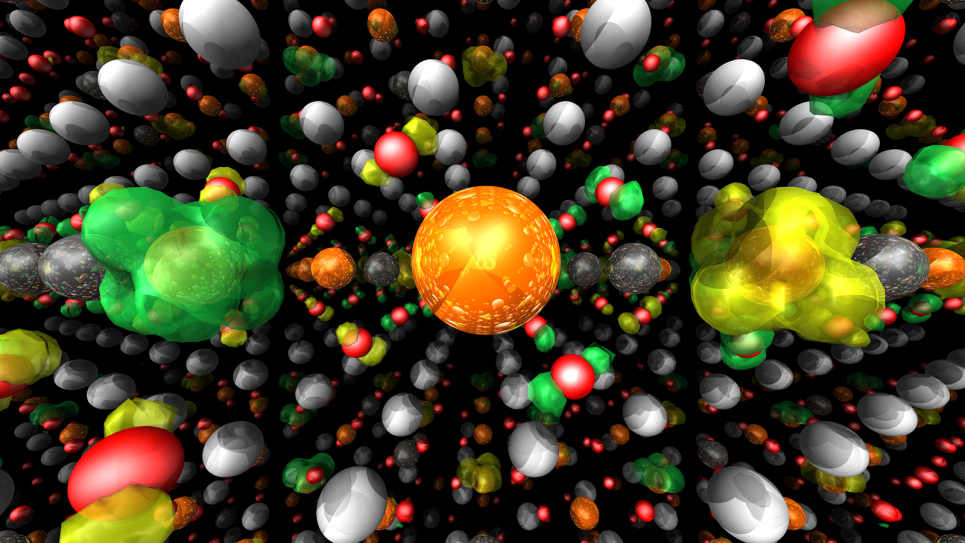
Turbulent Rayleigh-Bénard Convection at High Rayleigh and Low Prandtl Numbers
Rayleigh-Bénard convection (RBC) drives turbulent flows in nature and in many technologies, including chip-cooling devices, heat exchangers in power plants, and energy-efficient indoor ventilation via convection in the Earth’s atmosphere, core, and oceans. Turbulent RBC also provides insight into the occasional, but extreme events that can occur in turbulent systems, such as the cessation of the large-scale circulation and the spontaneous emission of large, thermal plumes.
The RBC flow in cylindrical cells has been studied intensively over the last few years in several laboratory experiments all over the world. However, very few experiments or simulations have been performed for very low Prandtl numbers (the ratio of momentum diffusivity to thermal diffusivity). Low Prandtl numbers have direct application to convection in liquid metals, and can also shed light on the convection in the Earth’s liquid metal core, in the sun, and in other stars.
With this INCITE project, researchers will use Mira, the ALCF's Blue Gene/Q supercomputer, to investigate turbulent RBC at very high Rayleigh number and very low Prandtl number. For these studies, they will leverage the Nek5000 spectral element software package, which was developed for solving the flow equations on massively parallel supercomputers. The direct numerical simulations will help researchers to understand the global structure of the convective flow and the boundary layer dynamics for this new parameter regime. This will provide new insights into mysterious turbulent transport processes and the rare but potentially catastrophic events that can occur in turbulent systems.


